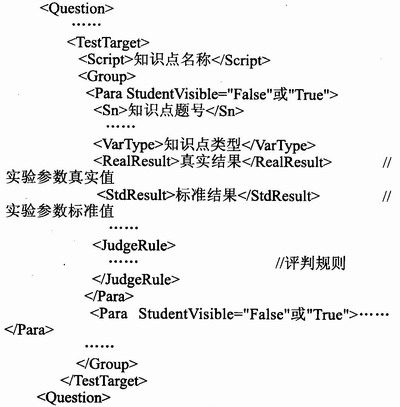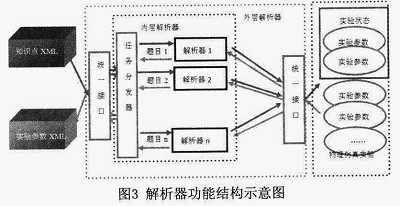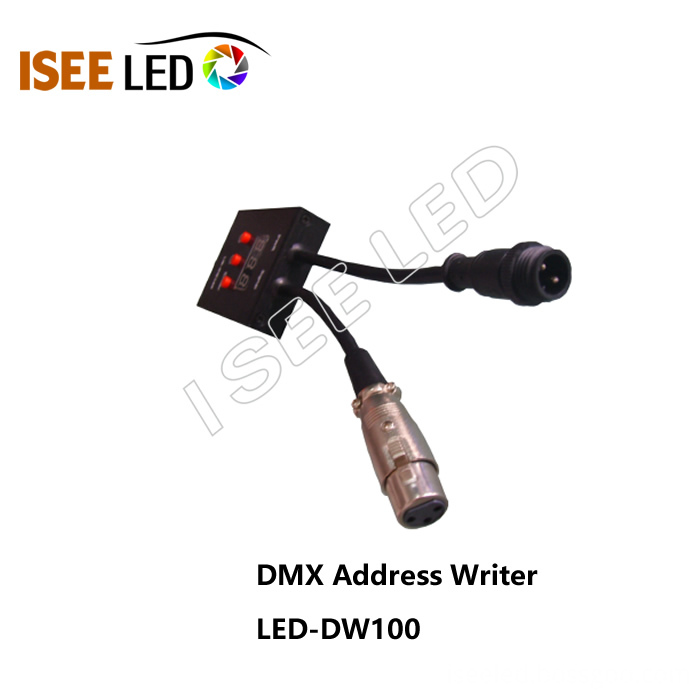O Introduction
Experiments are an important part of cultivating students' practical ability, innovative ability and innovative thinking. Assessment is an important guide to students' learning methods and learning content, and an important way to promote the improvement of teaching quality. The practical ability scoring system is a scoring system that is different from the objective test. It pays more attention to the students' subjective initiative, practical ability and mastery of the experimental operation process. Therefore, it can comprehensively examine the students' mastery and knowledge of the learned knowledge. The flexible use of the students is of great significance to the cultivation of students' comprehensive quality. The experimental practical ability test for large-area students is often impossible due to the large amount of equipment and faculty.
The university physics simulation experiment teaching system represented by China University of Science and Technology has played a very good role in innovative education mode, highlighting students' independent learning and cultivating students' practical ability. Based on the university physics simulation experiment, this paper has achieved the examination and automatic review of the practical ability of large-area students.
In order to solve the difficulty of exposing a large number of students' operational ability examinations, it takes a lot of teachers' power. This paper applies the university physical simulation experiment to realize the physical experiment test, records the students' experimental parameters, experimental state and experimental results, and proposes an XML-based form. The knowledge points of the test questions are described, and the automatic evaluation of the operation test is realized by analyzing and judging the experimental data, the experimental state and the XML data of the experimental results recorded in the operation test. The system solves the problem of conducting experimental practice ability assessment for large-area students.
1 Marking system based on XML experiment
1.1 Based on XML experimental scoring system structure Based on the XML operational examination scoring system structure shown in Figure 1, it consists of four parts: formal design, test paper production, examination system and review system. The main functions of each module are as follows: :
(1) Formal design scheme, that is, the description scheme of all test sites. It contains all the knowledge points that may be involved in the experiment, and the knowledge points of all experimental virtual instrument classes are completely and unambiguously converted into corresponding experimental parameters and experimental states, and described in XML form.
(2) Production of test papers. For the specific operational questions issued by the teacher, look up in part (1) and generate an operation test paper. This test paper describes the experimental parameters and experimental state of the operation questions to be tested in XML form and shares them. The data exists.
(3) Examination system. Provide an environment for students to take the exam and implement the exam. Then, the examination system captures the experimental parameters, experimental state and experimental results in the course of the experiment according to the student's operation process, and records the experimental parameters, experimental state and experimental results in XML form after the student confirms the submission of the test paper.
(4) Examination of test papers. The relevant experimental parameters, experimental state and experimental results of the operative test questions of the teacher and the experimental parameters recorded in the test system, the experimental state and the experimental results XML file are respectively parsed and compared, and then corresponding to the students according to the resolved scoring rules. Rate it.
This article refers to the address: http://

The XML-based scoring system completes the test evaluation with the help of the answer converter and the evaluation module. Under the appropriate intervention of the user, according to the knowledge point decomposition principle, the standard answer of the natural language description is converted into a normalized format acceptable to the test scoring system, and then the programmer converts the standardized format document into a computer language that the computer can understand, that is, XML. Documentation. The judging module is responsible for evaluating the documents submitted by the candidates according to the standard answer file in XML format generated by the answer converter, scoring the candidates documents under the guidance of the scoring standard, and writing the final score into the candidate database.
1.2 Formal description based on XML knowledge points The operation test questions are produced by teachers according to the teaching needs, and these test questions are composed of related knowledge points, in which the experimental points and experimental parameters and experimental state are correspond. Therefore, we have a formal description of the experimental test questions divided into two steps: the first step, the test questions are broken down into knowledge points, and the knowledge points are represented by a combination of experimental parameters and experimental states; the second step is based on this. A unified format is used to describe the logical relationship between exam questions, knowledge points, experimental parameters, and experimental state.
In the process of formalization, the design of the scheme is the basis, that is, extracting the information of each knowledge point in the examination topic, and designing the experimental parameters and experimental state corresponding to the knowledge point.
In describing the knowledge points to be examined in the test questions, in order to make the description more close to the actual situation of the real object, the described objects can be described completely and unambiguously. This paper adopts entity-oriented system analysis and description methods to adopt entities, Actions, tasks, and interactions, ie EATI methods (Entity, Action, Task, Interaction), describe the data members (general attributes and behaviors, capability characteristics) and class methods in the instrument entity class as experimental parameters and consist of relevant experimental parameters. Experimental state. This is the first step in a formal description.
After extracting the knowledge points, this article uses XML as a basis to customize a set of tags and their attributes in the form of DTD or Schema, and defines the logical structure relationship between them. We use a custom label to describe the logical relationship between the test-knowledge-experimental parameters and the experimental state, that is, an experimental test consists of related knowledge points, and the knowledge points correspond to some experimental parameters and experimental states, among other things. The scoring information and scoring rules are described. This is the second step of the formal description, which combines XML to represent the experimental parameters and experimental states corresponding to the described knowledge points in the form of XML.
Typical test questions - knowledge points - the formalization of experimental parameters and experimental parameters and the corresponding relationship between the attributes of the instrument class, as shown in Figure 2.

Among them, A: Explain the name, title number and other information of the knowledge point to be examined. B: Information such as knowledge point type. In Part B, information such as the type of data stored, whether the student is visible, etc. is described. C: Record information such as experimental parameters related to this knowledge point. It can be an experimental parameter or an experimental state composed of a combination of multiple experimental parameters. D: The scoring rules of knowledge points. In this part, the information of the scores of the questions to the partitions, the scope of the points, etc. are expressed in the form of XML formal descriptions as shared data, so that not only can the differences of different teachers in the content of the questions be satisfied, but also the satisfaction can be satisfied. Even for the same operational problem, due to different requirements, the requirements of the relevant experimental parameters and experimental state requirements may be inconsistent. Based on the above constraints, the DTD (abbreviated) of a knowledge point developed in this paper is as follows: 
1.3 The design and function of the parser
1.3.1 The design of the parser takes into account that different levels of students have different knowledge points, and the knowledge points of the same experiment will be different. Therefore, this requires that the same experiment must contain multiple different questions, exam questions and experiments. It should be relatively independent. To this end, we provide the same experimental parameters and experimental state sets for the same experiment. Different experimental test questions only need to access the experiment through a unified form, and select the experimental parameters and experimental state corresponding to the knowledge points. Based on the above ideas, this paper designs a test parser based on the experimental test through simulation experiments, and connects the experimental questions with the university physical simulation experiments. The parser is responsible for parsing the formal exam questions into the test questions - knowledge points - the logical relationship between the experimental parameters and the experimental state, and the corresponding experimental parameters, experimental states and experimental results are obtained through experiments. Considering the flexibility, diversity and extensibility of the experimental questions, this paper uses the service-oriented architecture (SOA) intermediate component model to describe the interface by using XML-based language, that is, the knowledge points examined by different test questions. Based on the formal description of XML, the university physical simulation experiment is invoked through the SOA model component, and the experimental parameters, experimental state and experimental results generated during the experiment are written and read in the form of XML. This not only enables the arbitrary expansion of the test questions, but also ensures the high degree of independence of the university physical simulation experiment. Their structural relationship is shown in Figure 3.

Based on the above ideas, this paper uses the inner and outer two-layer structure when designing the parser. The outer parser is used to parse the experimental type of the configuration file related to the experimental test questions in the XML, and the parsed experimental title number is used as the identifier of the next parser to be distributed in the form of a task distributor; the inner layer The parser submits the XML configuration file to the experimental parser for parsing according to the passed number identifier, and loads it into the university physics simulation experiment system through the parser unified interface; then the parser tests the university physics simulation experiment. The process generates experimental parameters, experimental state and experimental results in XML form for analytical reading and evaluation, so as to achieve the purpose of automatic examination of the experimental operation test.
1.3.2 Function of the parser According to the above design, the parser has the following two functions:
(1) Reading of experimental parameters, initializing test experiments. In the test system, in order to test an operational test, it is necessary to initialize the experimental instrument related to the test operation before the test begins. This initialization can be divided into two cases: a. Zero the current instrument in the experiment. Because in the real experiment, considering the safety factor of the instrument, it is necessary to put the important parts of the instrument switch and other related to whether the operation of the instrument is safe in a closed initial state, so the instrument should be turned off before the virtual instrument experiment starts. status. During the course of the experiment, students are required to determine whether to turn the relevant instruments on or off according to the experimental requirements. This is also an important basis for scoring student operations. b. Load the instrument parameters associated with this operation. In the experimental test, since each operation question has its own characteristics, the experimental instruments involved in each operation problem should be set with relevant attributes to prepare for the next experimental test. At this stage, the relevant experimental parameters, that is, the attributes in the instrument class, are changed to meet the needs of different test questions.
In short, before the start of the experimental exam, the parser needs to parse the relevant experimental parameters and experimental state of the XML form, and then load the parsed experimental parameters into the relevant properties of the test instrument class.
(2) After the end of the experimental test, the parser writes the actual values ​​and standard values ​​of the experimental parameters and experimental states generated during the experiment into the XML data file in a formal manner. Then in the examination review stage, the experimental parameters, experimental state and scoring rules in the XML data file are analyzed, and then the scoring program scores the student's operation experiment based on the parsed data.
2 Implementation of XML-based experimental scoring system in university physics simulation experiment This section takes the test of electronic charge test by oil drop method as an example, and realizes the design idea and design scheme of XML automatic scoring system.
2.1 The physical principle of the electric charge measurement by the oil drop method The basic design idea of ​​the electronic charge of the Millikan oil drop test is to make the charged oil drop in a state of stress balance within the measurement range. The movement of the oil droplets is controlled by adjusting the value of the equilibrium voltage during the experiment and adjusting whether the oil droplets in the microscope observation window are at the clearest position, and then reading the value of the equilibrium voltage during the experiment, the drop of the oil droplets Time, etc., calculate the charge of the oil droplets, and then measure the value of the electronic charge based on the principle that the charge of the oil droplets is an integral multiple of the metacharge.
According to the oil droplets for the uniform motion or static motion classification, the oil droplet method is divided into dynamic measurement method and balance measurement method. Their formulas are: 

among them,  C is the instrument constant, U is the voltage of the two plates, tf is the time when the oil droplets fall at a constant speed, tr is the time when the oil droplets rise uniformly, p is the standard atmospheric pressure, b is the correction constant, q is the charge of the oil droplets, η It is the air viscosity coefficient, s is the distance at which the oil droplets drop at a constant speed, Ï1 is the density of the oil droplets, Ï2 is the density of the air, and d is the parallel plate distance.
C is the instrument constant, U is the voltage of the two plates, tf is the time when the oil droplets fall at a constant speed, tr is the time when the oil droplets rise uniformly, p is the standard atmospheric pressure, b is the correction constant, q is the charge of the oil droplets, η It is the air viscosity coefficient, s is the distance at which the oil droplets drop at a constant speed, Ï1 is the density of the oil droplets, Ï2 is the density of the air, and d is the parallel plate distance.
2.2 Formal description based on XML knowledge points According to the principle of the above oil drop experiment, combined with the clarity of oil droplets in the field of view in the virtual instrument class is represented by the property value of Properties_Microscope_Whirl, so the EATI idea is used to know the clarity of oil droplets in the field of view. The point is described as follows: 
In the above XML description,
2. 3 based on XML parser examples
2.3.1 Analysis of the initialization parameters of the experiment The reading of the oil droplets is still as follows. 

In the above XML configuration file,
2.3.2 Parameter Analysis and Judgment of Experimental Results During the student experiment, the parser will write the Properties_Microscope_Whirl attribute value indicating whether the oil droplet is clear in the virtual instrument class, and write it to the data file in XML form. The XML description is as follows: : 
When the exam is over, the test system automatically records and saves the experimental parameters, experimental state and experimental results generated by the students in the form of XML. Then the parser is based on the XML file
In short, the core idea of ​​the XML-based operational automatic scoring system is to transform the complicated logical relationship descriptions of the test-knowledge-experimental parameters and experimental state into simple and intuitive XML documents; convert complex scoring into XML. A simple parsing of the document.
3 Conclusion Based on the XML-based formal description scheme, this paper reviews the operation process of the students by recording the experimental parameters, experimental state and experimental results involved in the operational questions, and realizes the practical ability for large-area students. The automatic review of the examination has broad application prospects in the experimental practice ability examinations of various universities and various skills training assessments.
Manually set addresses on the dmx lighting with the Iseeled Address Writer . The Led Address Writer is compatible with most professional lighting. The digital display of Dmx Writer allows for fast and easy setting addresses . ISEELED address writer is convenient for customers setting DMX addresses(such as DMX vertical tube, DMX flood light, DMX pixel lamp and so on)fast and easily. The addresses can be set by individually or uniformly with our address writer. Our address writer has the address setting function itself.
Photo show of Dmx Address Writer:


Dmx Address Writer,Address Writer,Led Address Writer,Dmx Writer
Shenzhen Iseeled Technology Co., Ltd. , http://www.iseeledlight.com